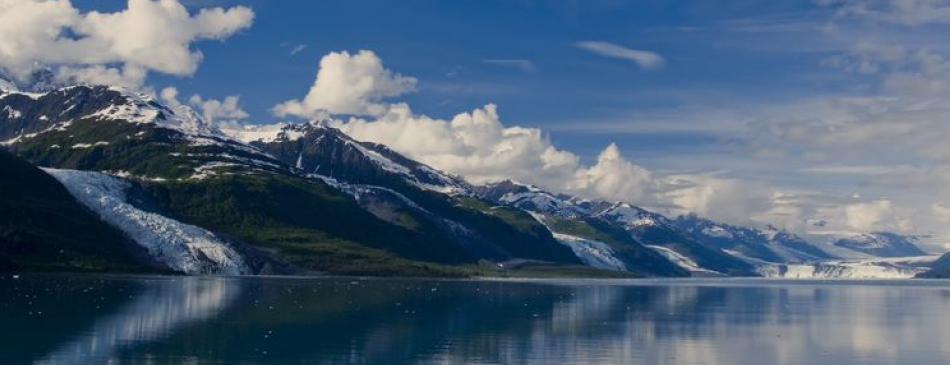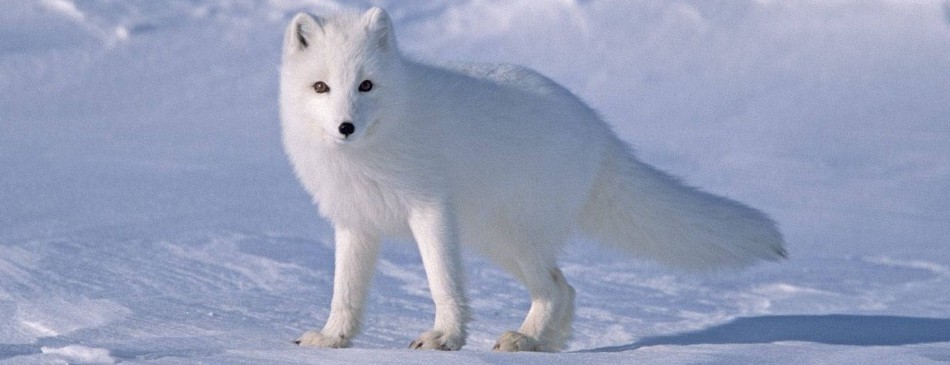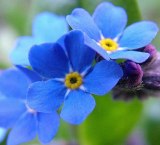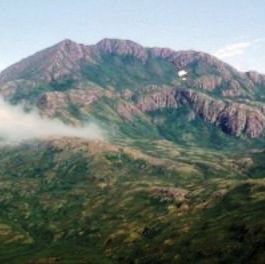Alaska has only one plant listed as as a state endangered species. It is the Aleutian shield fern. It lives on cliffs and rocky outcroppings at approximate elevations of 1,200 to 1,700 feet. The Aleutian shield fern is considered in danger of extinction and has a global ranking of G1.
The endangered Aleutian shield fern, Polystichum aleuticum is known from only two locations, Atka and Adak islands in the Aleutian Islands, Alaska. It is one of the rarest and most restricted plants in North America. The Atka population has not been relocated since its original discovery in 1932 in spite of repeated attempts. In 1975, Aleutian shield ferns were discovered at Adak, and subsequently 3 additional populations have been found there
Following the endangered listing of the Aleutian shield fern in 1988, a recovery plan was conceived. The recovery plan called for developing a management plan to: expand on protective measures already in place through refuge regulations, such as the prohibition of unauthorized plant collecting on refuge lands.
Aleutian shield fern is “a small, tufted, solitary fern from a tout rhizome with many chestnut-brown old stipe bases. The fronds, present only during the growing season, grow to 15 centimeters (6 inches) long, are dark green to olive green in color, gradually tapering above and below the middle. The leaf blades (fronds) are divided into overlapping, ovate segments (pinnae), incised with short bristle tips. Straw-colored scales are sparingly to abundantly distributed along the main leaf axis and especially on the under surface of leaf segments. The spore masses are aggregated into 6-8 patches (sori) forming two rows on the under-surface of leaf segments.
Currently all known populations of the Aleutian shield fern occur on Mount Reed, on Adak Island, although the species formerly was found on Atka Island and it may occur elsewhere in the Aleutians. A number of surveys have been conducted, but no new populations have been found.. Other searches have taken place, without success, for shield ferns in habitat similar to Mt. Reed on 11 other Aleutian islands while conducting botanical surveys.
All populations of shield ferns are found between 360 m and 526 m elevation on southeast or east-facing steep mountain slopes of Mt. Reed, within about 400 m of each other. Shield ferns are associated with dwarf willow-moss, dwarf willow-sedge-moss, and sedge-anemone-arnica-moss, community.
The reasons for the rarity of Aleutian shield fern are not understood and are probably associated with natural processes. Factors limiting the growth of the existing populations are not known. Direct threats to the populations on Adak and to any remaining populations on Atka potentially include caribou and reindeer tramping and grazing. A major indirect threat to shield ferns is the slumping of growing substrate from steep rock faces causing the loss of ferns. Many of the shield ferns on Mt. Reed are located on small soil mats only a few inches thick which rest directly on smooth rock faces. Slumping is most likely to be caused by earthquakes, and human foot traffic. It is likely that a future earthquake could cause shield fern soil mats to slump off rock faces and destroy a significant portion of the population.
Three more Alaska plants have been assigned a global rating of G1, which indicates a plant is “critically endangered throughout its range” by The Nature Conservancy. They are Aleutian wormwood, Sessile-leaved scurvy-grass, and Bering Sea douglasia.
Aleutian wormwood grows on Kiska and Rat Islands, part of the far western Aleutian Islands chain. It demands an elevation of at least 700 ft. and lives best in graveled, windy fellfields. Generally, Aleutian wormwood appears as scattered white rosettes in bare patches between healthy vegetation. Its leaves are covered with long blonde hairs, similar to a paintbrush.
Native to Kodiak and Sitkalidak Islands in south Alaska, Sessile-leaved scurvy-grass lives in gravel bars on the coast in intertidal zones. It can grow up to 7 cm tall but is under water at high tide. Its seeds are covered with waxy scale-like knobs called trichomes.
The Seward Peninsula reaches out into the Bering Sea from Alaska's west coast and hosts the Bering Sea douglasia, a small herb with a slender tap root. On the peninsula, this G1-ranked douglasia is often found on limestone. It also grows on mountain summits in western Alaska at heights between 1,000 and 1,800 feet. The Bering Sea douglasia is differentiated from other species of douglasia by the dense blanket of tiny, branched hairs covering the leaves and stem. Pink flowers bloom in mid to late June and gradually turn white.
|
|








